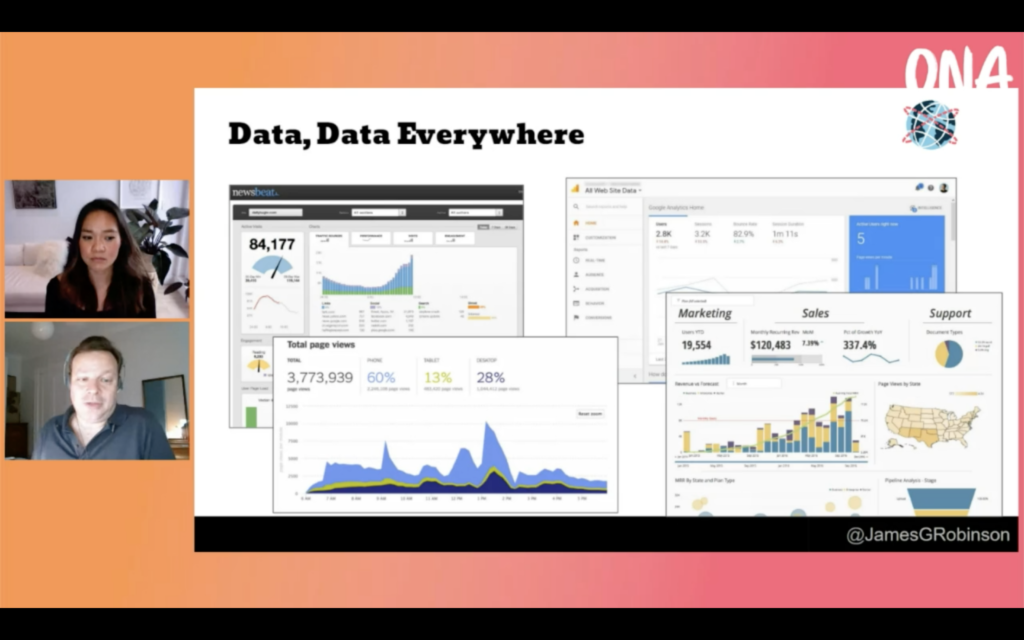
Tips for using research to make behavioral analytics useful
“What we really want is to be the light that illuminates the newsroom as we move forward on our journalistic and business goals,” James Robinson, director of analytics for The New York Times said on the power of analytics. “If people can’t use that light to see where they’re going, they’re going to get stuck and they’re going to get lost.”
Have conversations in the newsroom about collaboration with data
Robinson warns against data and analytics conversations only happening in silos in the newsroom. Making intentional spaces, such as a designated Slack channel for questions, comments or concerns about analytics is an option the New York Times has adopted. Along with a Slack channel, the Times holds regular office hours for in-depth discussions between the analytics department and journalists in the newsroom that want to understand how they can use analytics in their role.
Know when and how to utilize tools/tech
There are many programs to take advantage of when looking for data about your publication’s audience and engagement. Chartbeat is great because it presents social platforms in real time to help with quick decision-making. Google Analytics can be ideal for gaining insights on long-term audience behavior and needs.
Make data actionable
What do you want to know or learn? That will help you decide which analytics are relevant for your work. Two easy ways to think about analytics is measurement vs. insight, Robinson said. Measurement can be simple details about engagement such as page views, average time spent on page, unique users, etc. Insight can help newsrooms understand user behavior. Identify your audiences’ needs and how your content resonates with your audience.
Low engagement doesn’t mean that readers aren’t interested in the topic, but could mean that the presentation of content isn’t resonating.
Combating fear against analytics
Robinson recommends evaluating your newsrooms’ internal audience and its individual needs. What do your reporters need to know? What do they want to know? Why does the newsroom need this data? An inevitable part of widely introducing analytics to your newsroom is running into the automatic hesitation from newsroom colleagues. When you’re creating the content, analytics can sometimes be boiled down to: Do people like my stories? Is my content doing well on our site?
This worry can be leveled with data fluency for reporters. Once they come to a fuller understanding of what analytics are and how data-driven decision making can help them resonate with their audience — they will realize the benefit of them in broadening their reach and impact.
Tatyana Monnay is a junior at the University of Missouri. She will be reporting on sessions at ONA20 for the Innovation Lab at the Reynolds Journalism Institute.

Comments